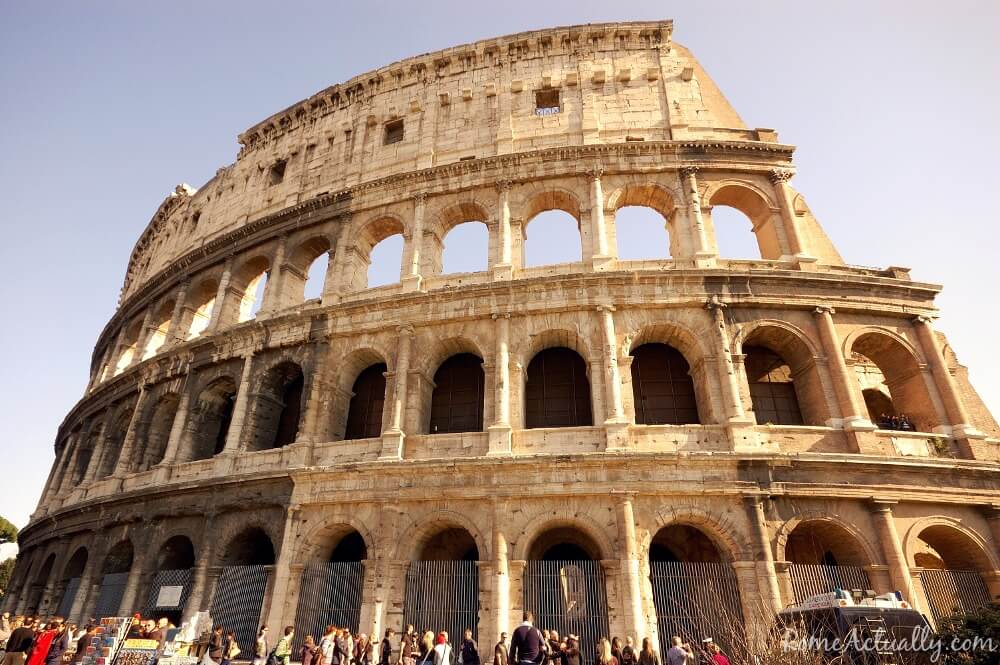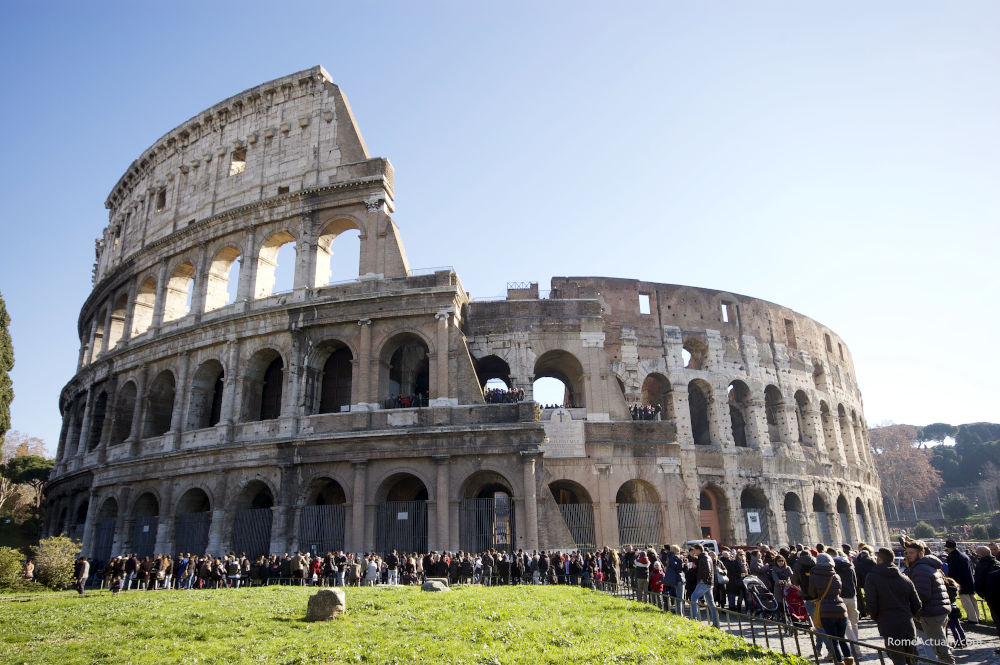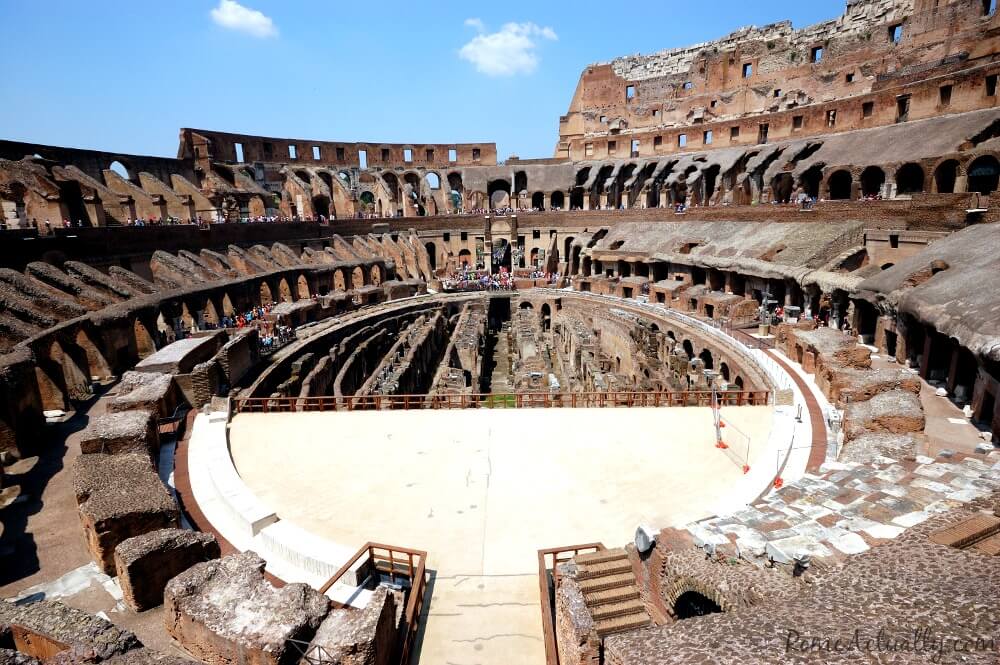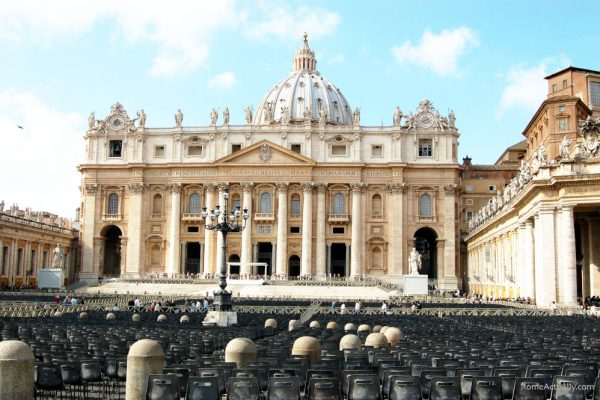If you are planning a trip to Italy’s capital, I’m positive that one of the first Rome attractions you’ll consider visiting is the Colosseum. Even if you are staying only one day in Rome. To know more about it, here are some interesting Colosseum facts, its gory history, and some tips and tricks to know before you go.
Hardly in need of any introduction, the Amphitheatrum Flavium is one of Rome’s most visited and photographed landmarks, one of those must-sees no guidebook would ever dare to forget, and one the Rome’s top archaeological sites. It must be its look, its majesty, or its ancient wisdom overlooking our whimsical modernity, but the Roman Colosseum never fails to attract thousands of people every day.
You don’t even need to make complicated planning to see this fabled place, it’s visible from many of the spots you’ll be likely visiting. If you are in Piazza Venezia, you can see it wrapped up in the maze of the city’s pollution and traffic, if you go up to the terrace of the Vittoriano Complex, yet again it will come up in your pictures. In a nutshell, if you are in the city center it’s almost impossible to avoid it. And if you want to make sure you reach it early morning, your best bet is to book a hotel near the Colosseum, which is also a fantastic area to stay in Rome with kids.
So, what’s so cool about the Roman Coliseum? Its architectural style? Ridley Scott’s influence on his audience? Read on and find out some historical and fascinating Colosseum facts!
READ MORE: If you want to delve deep into the history and architecture of this famous Rome landmark, check out our guide to the best Colosseum tours.

Interesting facts about the Roman Colosseum
The Colosseum as a symbol of Roman engineering skills
The Colosseum comprises four floors, and its facade is made with limestone from nearby Tivoli. Its imposing structure reveals in full the skills of ancient Romans in the organization of a construction site.
Building the foundations of the Colosseum where was the manmade lake of Nero’s Domus Aurea was a huge endeavor. In about 6 months, 5216 workers removed some 158.000 cubic meters (5.579.717 cubic feet) of dirt. Once the digging was over, they built circular foundations, the supporting structure in travertine marble and the radian walls, corridors, staircases, and the basement.
On the podium was the space for the Senators, the only ones entitled to have their name carved in their marble seat.
Is the Colosseum one of the 7 wonders of the ancient world?
Even though not officially included in the list of the Seven Wonders of the Ancient World drawn between the 2nd and 1st centuries BC, the Colosseum has been often defined in more modern times as one of them.
The Colosseum has, in fact, been considered for centuries one of the 7 wonders of the ancient world because of its perfect structure, sophisticated architecture, and impressive size. One of the most famous and well-preserved buildings, it’s one of the places Rome is famous for.

The Colosseum is a UNESCO World Heritage Site
One of the most well-known Colosseum facts is that it has been enlisted as a UNESCO World Heritage Site in 1980 along with the whole of Rome’s historic center, the Vatican City, and the Basilica of Saint Paul Outside the Walls.
The reason? Because Rome’s historic center includes important testimonies of unparalleled artistic and historical value. And this includes also monuments of the ancient world like the Pantheon, the Roman and the Imperial Fora, and our Colosseum.
The Colosseum is the world’s largest amphitheater
Elliptical in shape and measuring 188 mt (617 ft) on its long axis, 156 mt (512 feet) on the short one, and 50 mt (164 ft) in height, the Colosseum reaches a total of 24000 square meters (258334 square feet), even bigger than Saint Peter’s Basilica. Building the pillars required over 100.000 cubic meters (3531466 cubic feet) of travertine marble.
With a capacity of 75.000 spectators, it’s larger than the world’s biggest stadiums, and apparently, the audience has reached 80.000 more than once.
It took some 8 years to build
The construction of the Colosseum began around 72 AD under the rule of Titus Flavius Vespasianus. After 8 years, under the reign of his son Titus, the Colosseum was inaugurated.
However, the emperor Flavius Domitian added the underground section and the dwellings for the gladiators in 81 AD.

What’s with the holes dotting the Colosseum’s facade?
Getting close to the Colosseum, we can see a myriad of smaller holes in its facade. According to popular belief, these were caused by the Barbarians who tried to destroy the Colosseum because it was the symbol of Rome’s grandeur.
The Vandals would have filled the holes with gunpowder to blow up the building. But the Colosseum, despite all the efforts, was still standing. From here, the conviction that it was indestructible.
Since it’s unlikely that gunpowder already existed, those holes secured the linchpins Romans used to erect buildings and moved from one construction site to another.

The name is a bit of a mystery
While the official name, Flavian Amphitheater is pretty straightforward because it was built under the rule of the Flavian Dynasty, historians are still debating about the origins of the title of Colosseum.
Some say that it’s taken after its colossal size, while according to other researchers, the amphitheater is called Colosseum because of the bronze statue of the Colossus of Nero that was standing nearby. After all, the Colosseum occupies part of where was Nero’s Domus Aurea, more precisely, the place where was a lake part of Nero’s house complex.

Gladiators fought against each other or against wild animals
They were either slaves or criminals. But sometimes even noblemen who wanted to feel the vibe of risking their lives by proving their strength to the population and the Emperor participated in the shows.
Even though gory and terrible, the gladiators’ shows still evoke masculine power and strength, to the point that if you are in Rome with kids, they will love to join a gladiator’s class!

The shows served emperors’ propaganda needs
Here the Emperors, devoid of their humanity, coined the infamous “thumb down” expression and bewitched the citizens with the gimmick of Panem et Circensem. This can be interpreted as the forerunner of today’s propaganda system of distracting public opinion from the real problems by giving them money and entertainment. Except that today we don’t get the money.

During the shows, spectators played table games
One of the lesser-known Colosseum facts is that often spectators would gamble, even though gambling in Rome was allowed only during the Saturnalia, a festival in honor of the god Saturn. The passion for games was so big that it was a common practice among men, women, patricians, and plebeians without distinction.
During the shows, among the spectators was very common to carve the stones of the bleachers and the walls.

In the Colosseum, they ran naval battles
The diversity and the enthusiasm the Romans put into organizing their entertaining moments reveal how important leisure time was to them, and this leads to one of the fascinating Colosseum facts not many know about.
It would suffice to say that inside the Colosseum even representations of naval battles (naumachia in Latin) took place. Not many, but those few happenings were certainly spectacular, according to the witnesses who left written impressions about it. Not sure how they managed to organize these battles, but sources report that the Colosseum was filled with water and proper boats were brought in. All this was before underground cells and cages were dug.
READ MORE: 3 Days in Rome – What to do in Rome in 72 hours
The Colosseum was also the place for death sentences
Among historical Colosseum facts, we can’t forget that part from shows and fights, it was also the place for capital punishment.
On the other hand, while common knowledge might suggest that in the Colosseum early Christians were martyrized, probably due to Hollywood movies such as Quo Vadis, there is no historical record to prove this.
Make sure you read our post on the birthday of Rome to discover how the city was founded.

Visiting the Roman Colosseum: Know Before You Go
What is the best way to experience and get closer to the historical Colosseum facts? Visiting it, obviously! The biggest holiday, the busiest summer season, and the most tourist-crowded days are probably nothing compared to the excitement, the chattering, and the noise at the time of the first shows, when the Colosseum, just built, stood in all its glory. Here are some things to know before visiting the Colosseum.
The Colosseum ticket is valid for two days
From the moment you purchase your Colosseum ticket, it’s valid for 24 hours and gives you also entrance to the Roman Forum and Palatine Hill. The ticket costs 18€ (+2€ if you book online). If you want to access also the arena and the underground, the ticket costs 24€ and a guide is included.
Get there by metro
The easiest way to reach the Colosseum is definitely by metro. The station Colosseo along metro line B is right in front of the main entrance. Even if you are staying close to a station metro A, this is still the easiest option. You just need to change to metro B in Termini and do a couple of stops.
Book online
While by visiting early morning you have some chances to find a smaller queue, this is not always the case. Especially in high seasons like Christmas or summer, unless you start queueing at 5 am, you will likely find the line. Booking online is the best way to be sure you are skipping the queue.
Don’t bring large backpacks
They don’t have a cloakroom so any suitcase or large backpack will be confiscated. Don’t risk it if you want to enter, as there is no exception.
Don’t carry sharp objects, glass, and sprays
These items are not allowed in and will be confiscated.
Not sure where to stay? Check out our guide to the best neighborhoods in Rome.
READ IT LATER? PIN IT TO YOUR BOARD!





